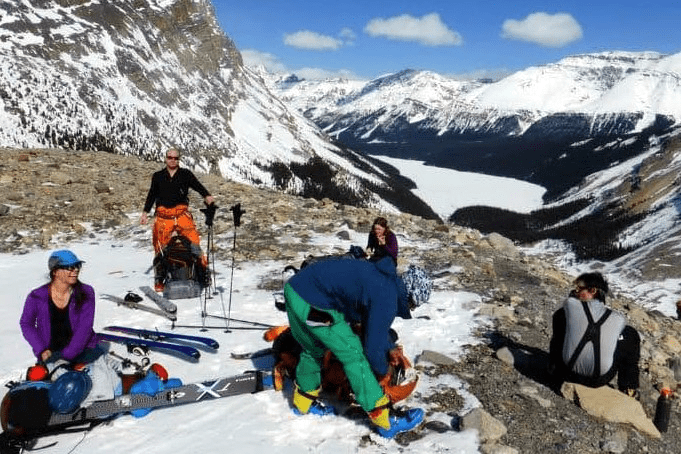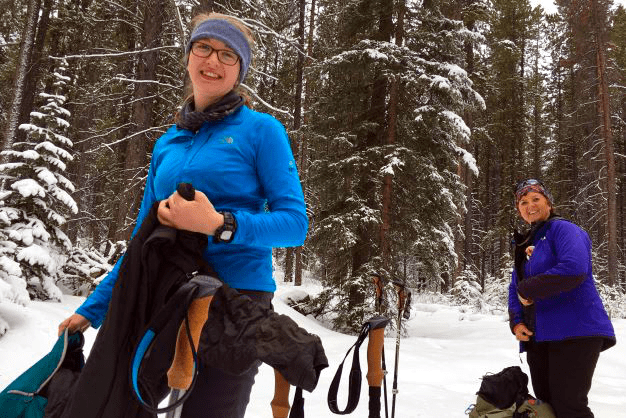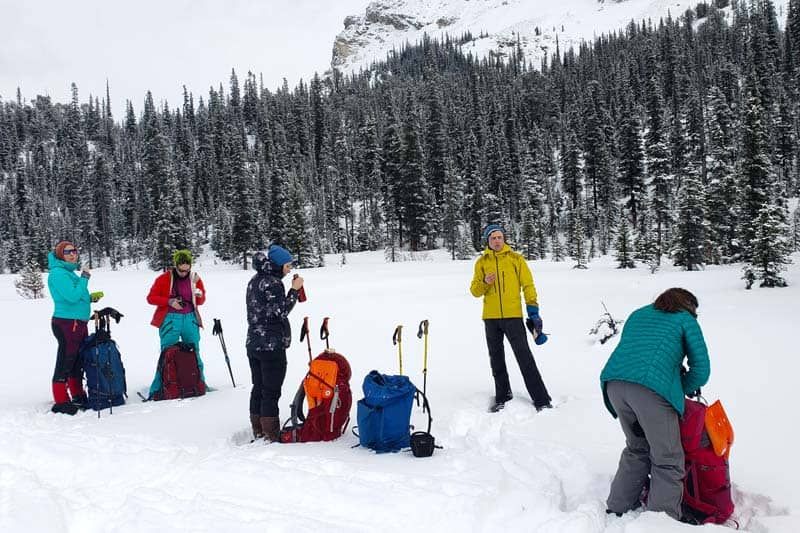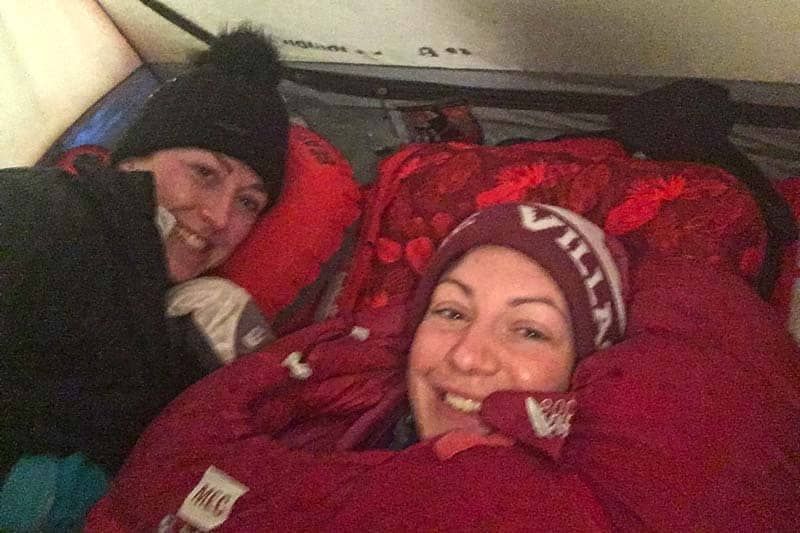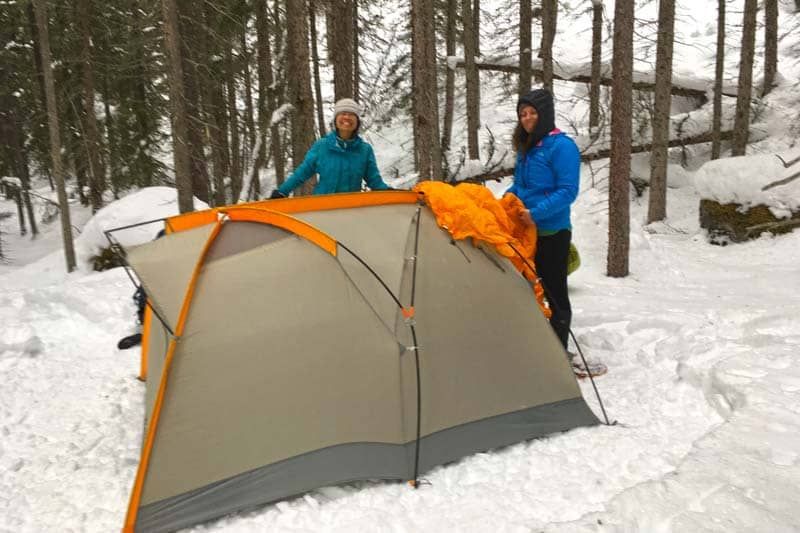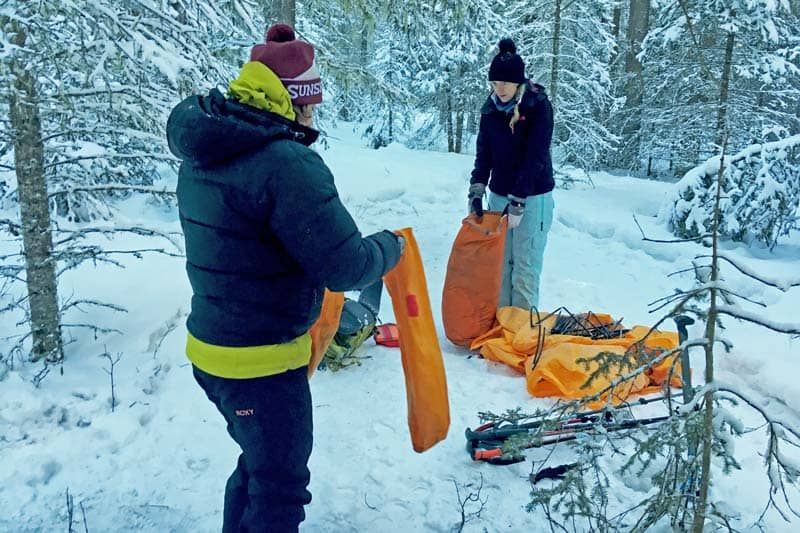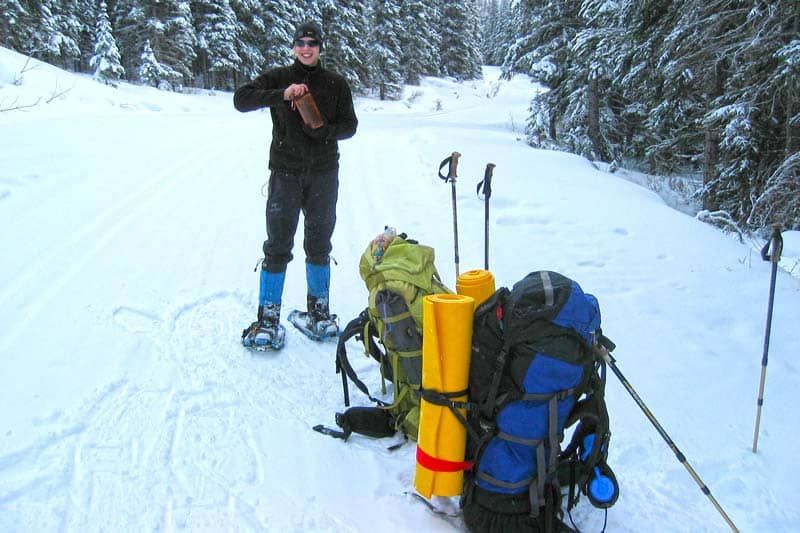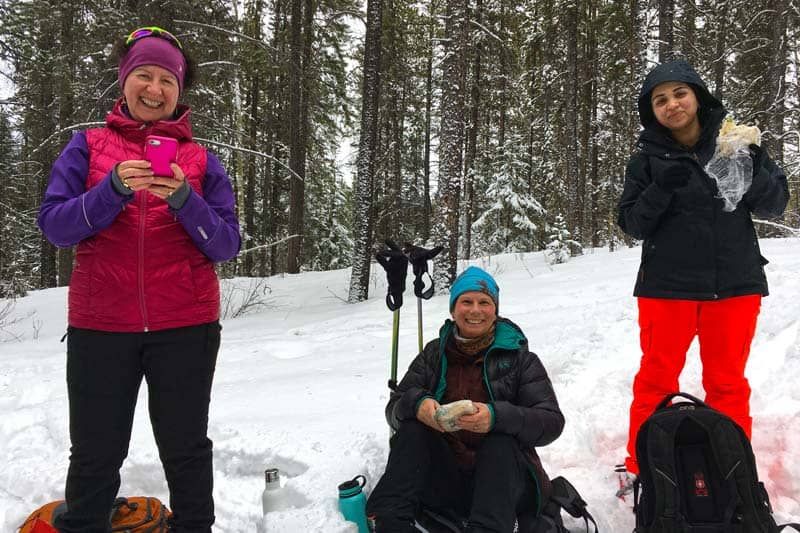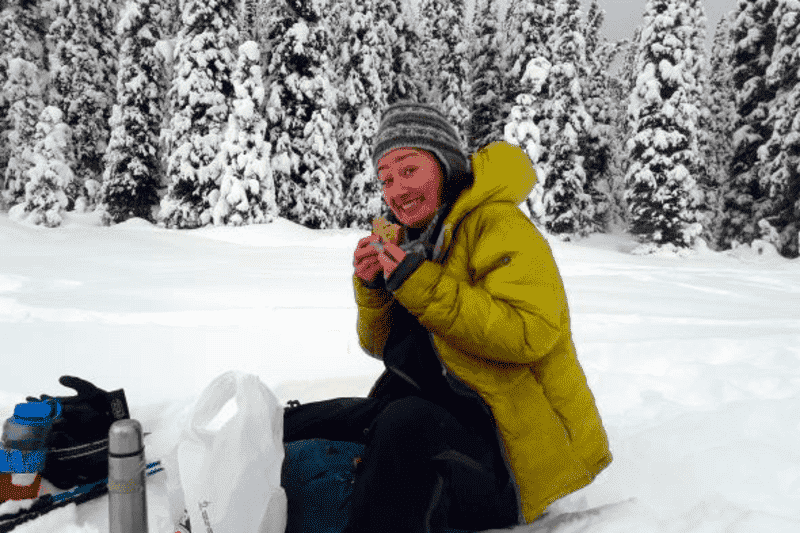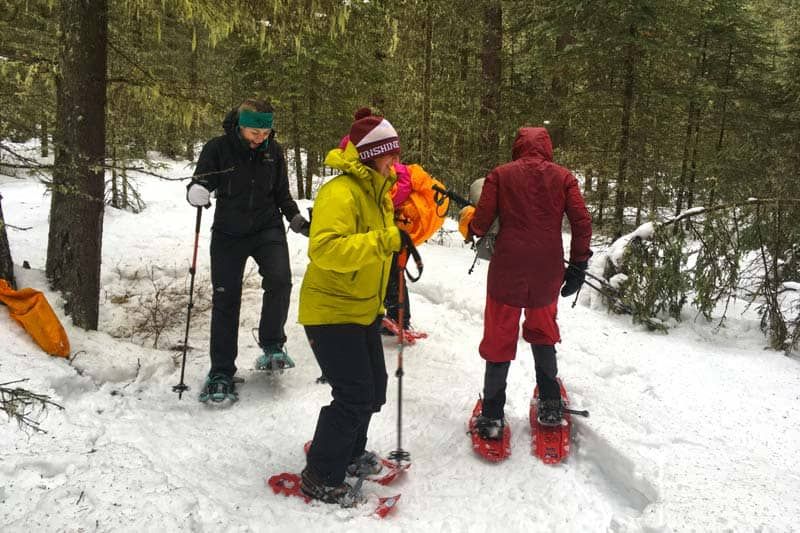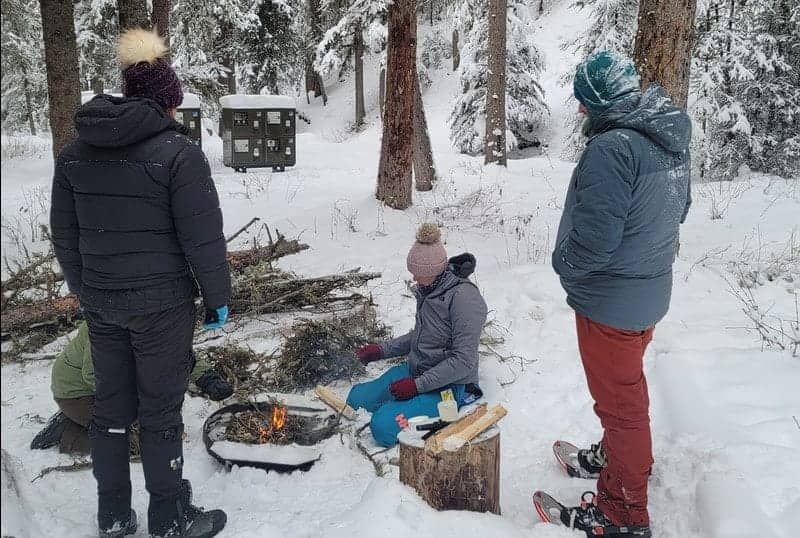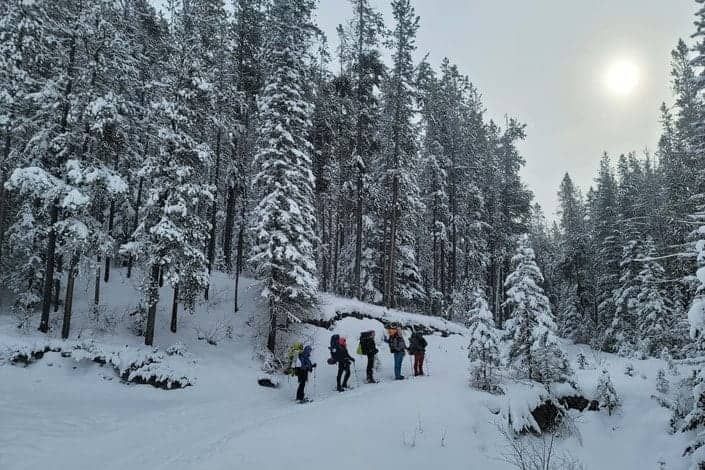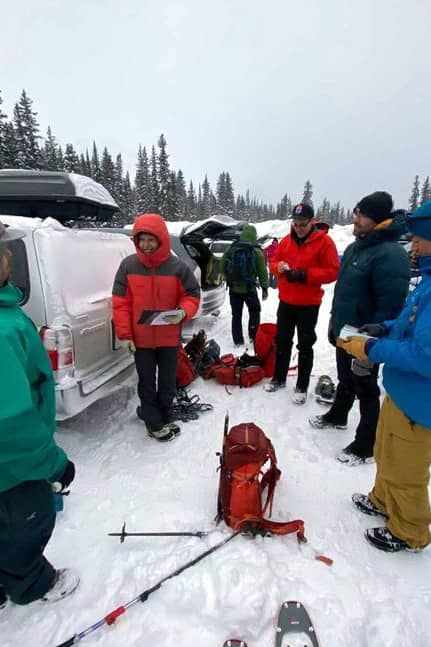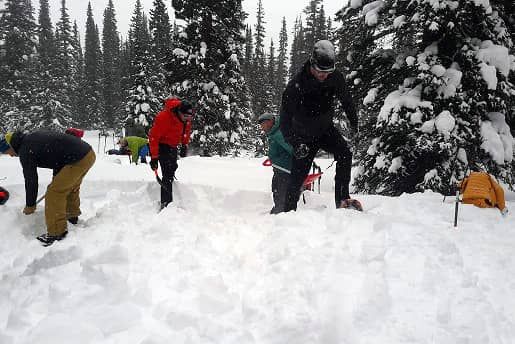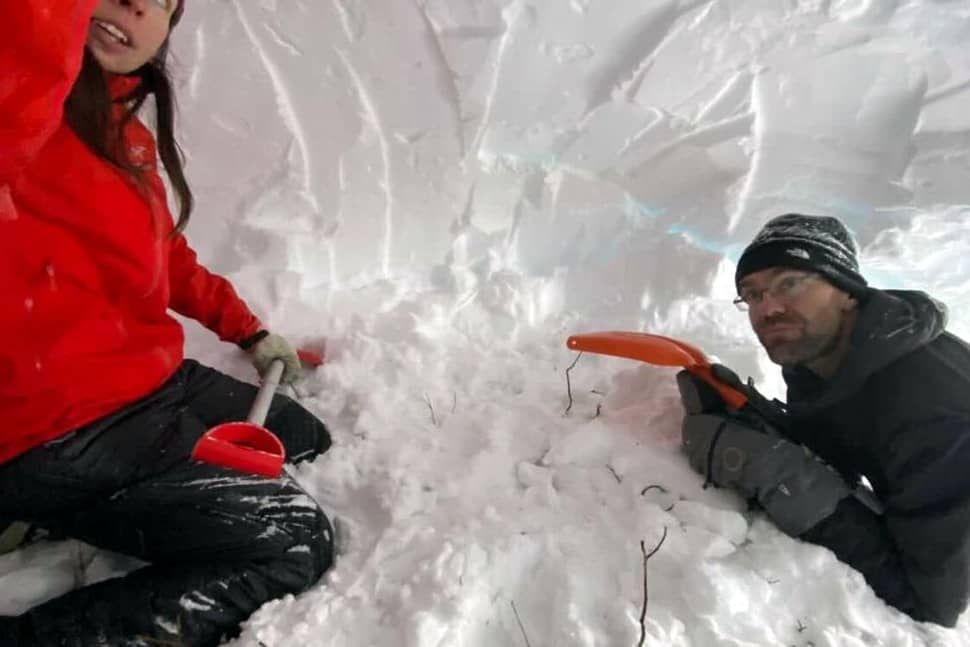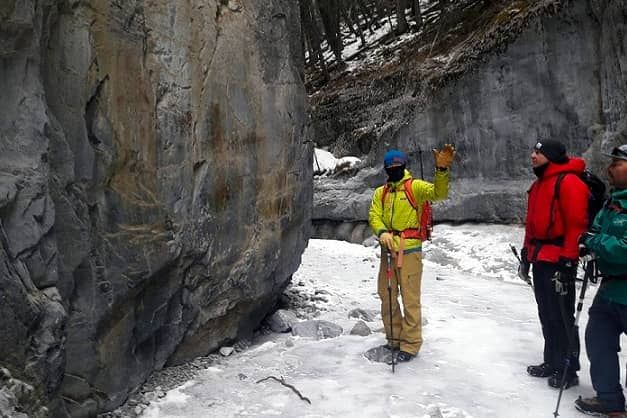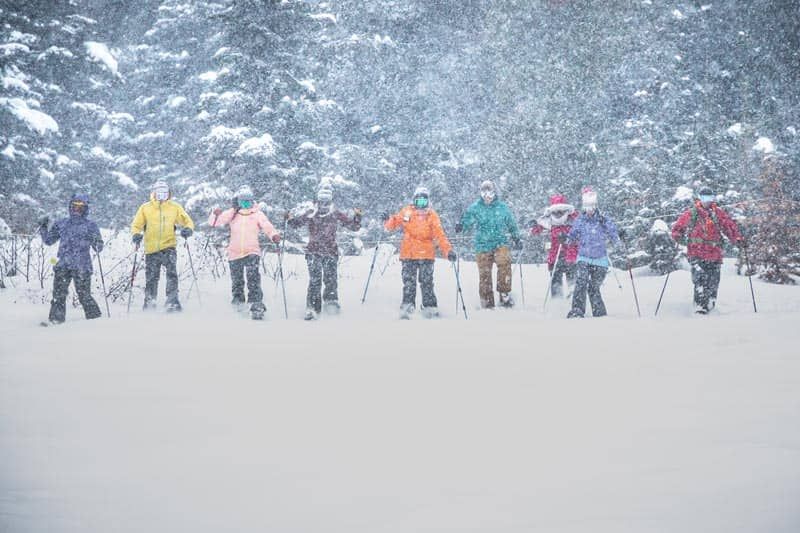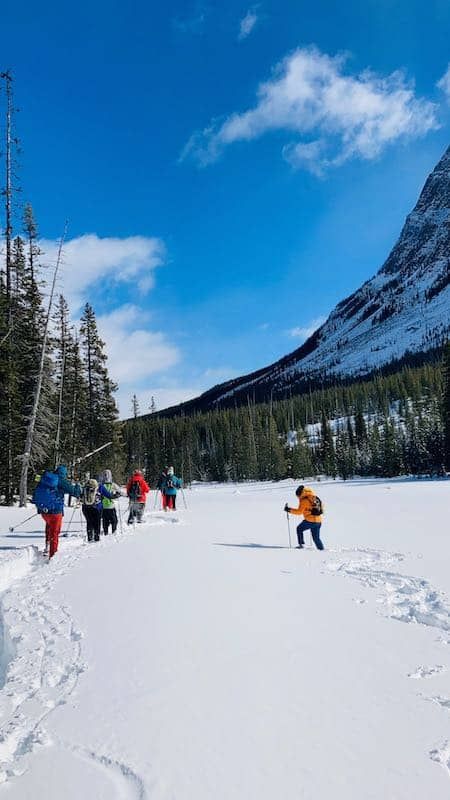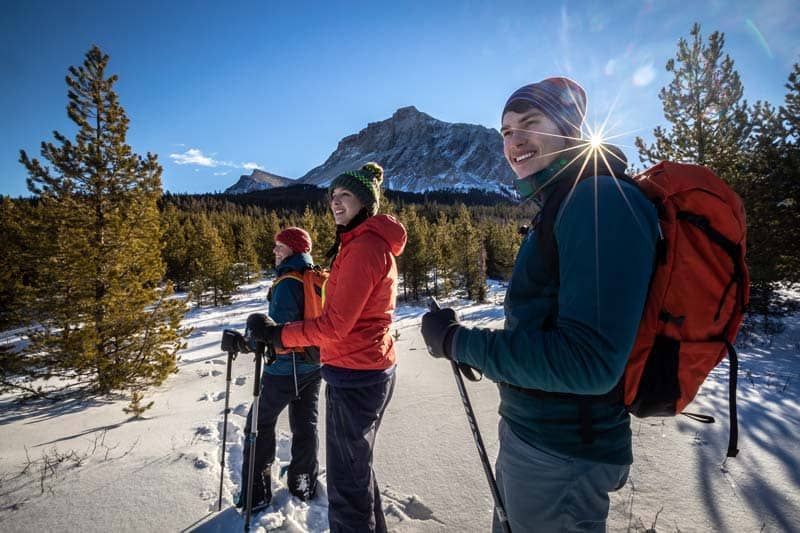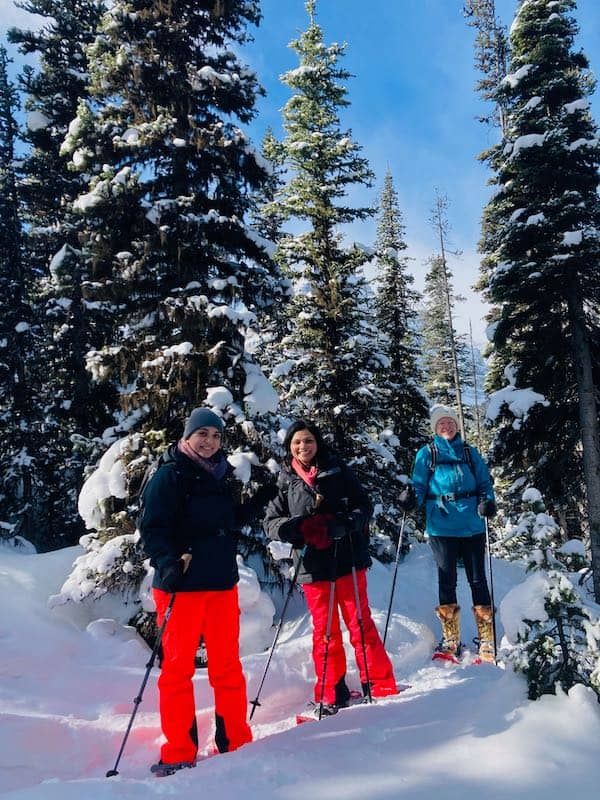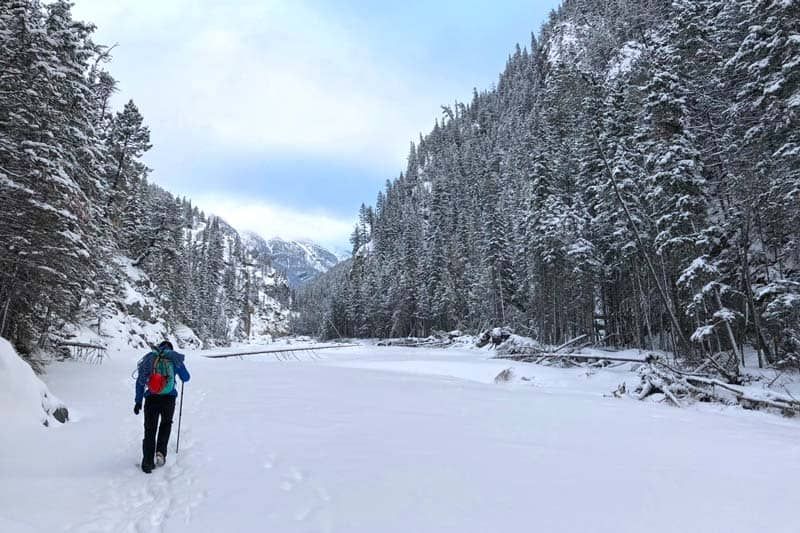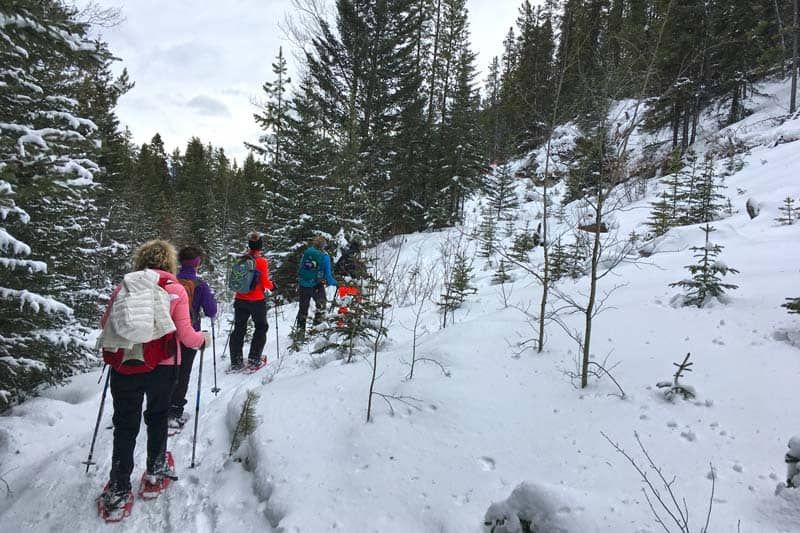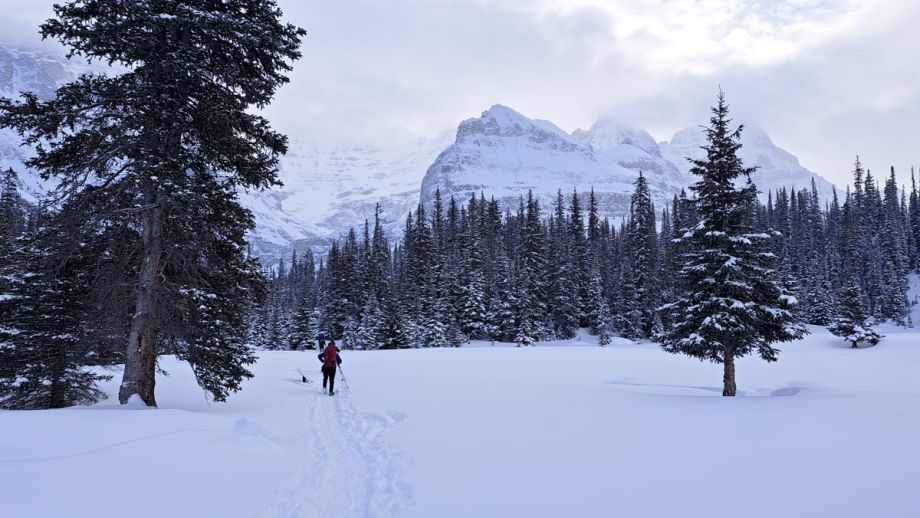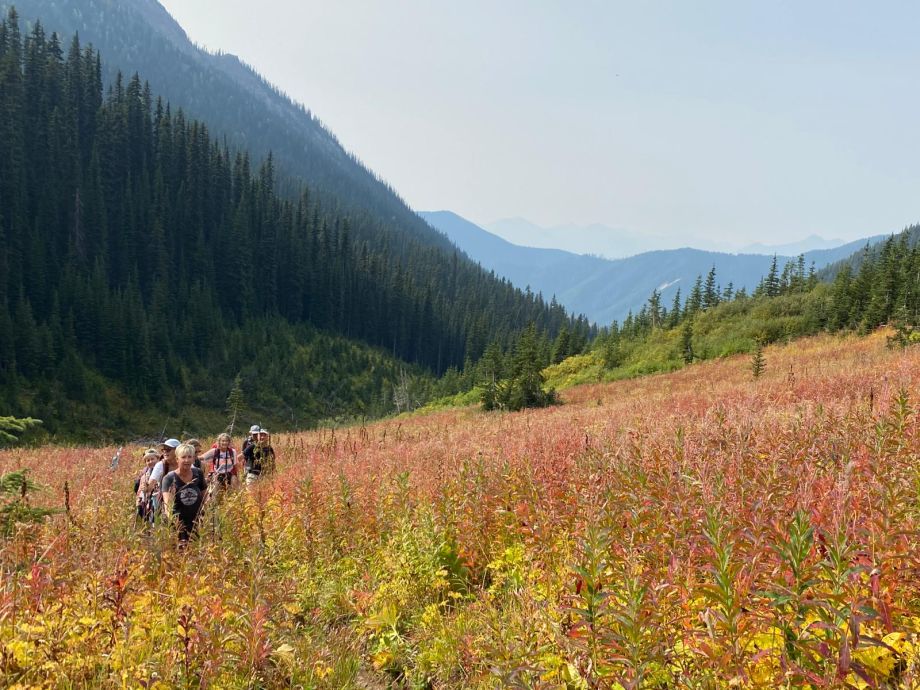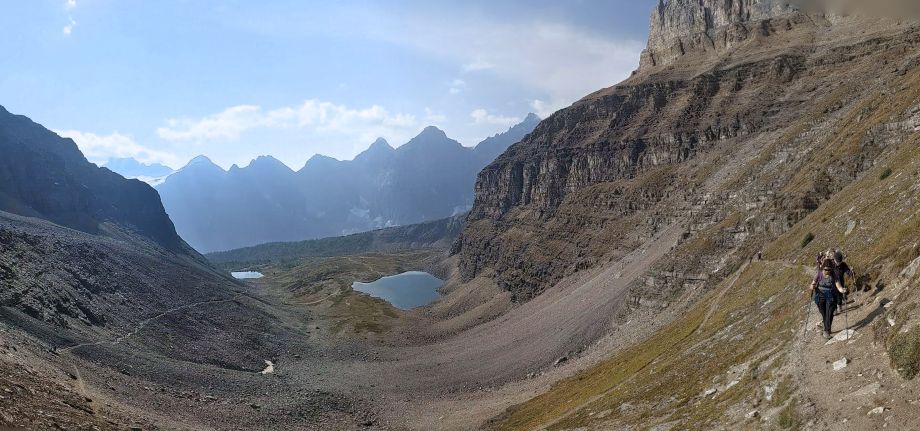How to Stay Warm Winter Camping
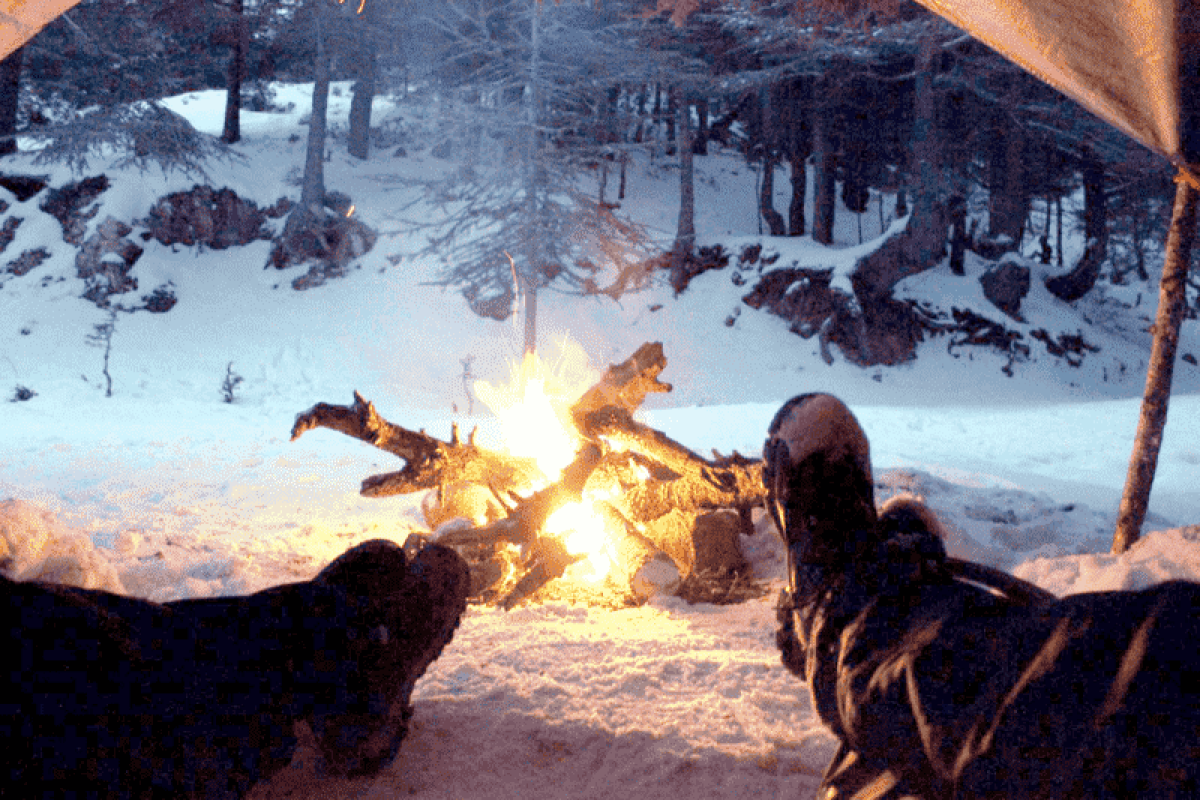
It is possible to stay warm while winter camping. In fact, if you can stay warm camping in a Canadian winter, you can stay warm pretty much anywhere. It takes smart strategies, planning ahead, and a bit of work, but it can be done! The payoff of sleeping warm and cozy in a beautiful winter wonderland is more than worth the effort.
"the beautiful winterland is worth the effort"
Insulative clothes work by creating an air cushion that traps heat around your body. If you wear too many tight fitting layers the air cushion is compressed and therefore there is nothing to keep you warm. The goal for winter hiking, backpacking, and camping is to dress in layers that can trap warm air.
During the Day
-
Ensure you avoid sweating throughout the day. This means stopping to remove layers as soon as you feel your armpits getting clammy, and then putting them back on if you get colder. Don’t push on if you are too hot, chances are your fellow hikers also need a layer change.
-
If you’re someone who sweats no matter what, you’ll want to pack an extra bra and shirt that you can change into at lunch as well as when you arrive at camp. It may not feel like damp layers make a big difference, but we recommend changing as soon as you get your tent set up. Here is an article that shows what Jenna, our lead guide, wears for winter hiking.
Sleeping
-
Keeping the air cushion in mind, if you wear too many layers inside your sleeping bag, you’ll be colder.
-
Wear a toque and a mid weight long sleeve shirt. A common spot for drafts is around your shoulders and the long sleeve shirt will combat that.
-
Using a sleeping bag liner will also help create an extra air cushion and keep you from bumping into the cooler edge of the sleeping bag by the zipper.
-
If you are someone who struggles with cold feet, wearing a pair of down booties inside your sleeping bag is a game changer. It also serves a double purpose for when you get up to pee in the middle of the night. You already have shoes on.
In the Morning
-
When you first wake up pull the layers you plan to wear that day into your sleeping bag with you. Your body heat will help warm them up prior to getting dressed
-
Put chemical handwarmers into your boots for 10min prior to sticking your feet in them. It will help take the chill out of the boots
General Comments on Clothing
-
Generally female specific clothing has a tapered cut. If we go back to the idea that clothing keeps you warm by creating air space, a tapered cut can sacrifice warmth for “style”. Keep this in mind when choosing key items (Gortex jacket and big puffy jacket) and buy a size larger than your normally would. Men’s cuts can sometimes be warmer for this reason.
-
If you have poor circulation or cold in general, consider heated socks. They can be pricey, but may be worth it if you really struggle with cold feet. For an overnight trip, be sure to bring spare batteries.
-
Wearing a thin glove with a over mitt will help keep your hands warmer in the coldest of weather
Equipment
Sleeping Bags
-
Investing in a good sleeping bag will save your trip. If you’re cold, you’re not going to have fun. For a winter trip we recommend a -29C bag.
-
Buying a bag with a draft cord makes a big difference. Tightening this cord around your shoulders will seal all of your valuable hot air inside your bag
-
A mummy bag will require less heat to warm it up as there is less space inside it. A larger volume bag will take longer and more energy to stay warm.
-
Pick a bag that is the right length for you. Too much extra room at the feet just means more space you have to spend energy heating up. If your bag does have space at the feet, fill it with the clothes you plan to wear the next day; this will eliminate the drafty empty space, and make getting dressed in the morning much nicer.
-
Sleeping bags with a hood will also help with the frigid nights. It might not be the first choice for someone who is claustrophobic, but you’ll be nice and toasty.
Sleeping Pads
-
This is what keeps you off the snow, so pick a well insulated one. Look for the “R-rating”; this is a number between 1-10, with 10 being the best insulated pad that will keep you warmest. For winter camping, look for an R-value of at least 5. Generally the higher the R-value, the more expensive and/or heavier the pad will be.
-
If you don’t have a sleeping mat with a high R-value, put a cheap closed foam pad under your normal sleeping pad for more insulation. Or, you can place your gortex/rain layers under the torso of your sleeping pad.
Tents
-
If you’re winter camping often we recommend a four season tent. If you’ll only be winter camping occasionally a sturdy three season tent with less mesh will work too.
-
4-season tents have stronger frames to resist snow and wind, sturdier fabrics to keep cold air out, and more room for the extra gear we bring for winter camping.
-
It may seem counterintuitive but leave mesh open at the top of the tent. This will help decrease condensation and therefore keep you warmer because the extra moisture is not getting stuck in your clothing and sleeping bag.
Check out this video for more details on winter camping gear.
We recommend renting or borrowing gear for your first few trips so you can learn what works before commiting to buy. When you decide to purchase check out this article about ways to find cheap outdoor gear.
Eat! And Drink!
Our bodies need fuel and water to keep us warm.
Simple Carbs and Sugar
-
These are easy for our bodies to rapidly convert to energy and heat, so always have some on hand. If you are cold, eat something sugary like chocolate right away and it will give you a quick boost.
Protein and Fats
-
These take longer for our bodies to turn into energy, but they burn longer and are key for us to keep warm long term. Ensure the meals you’ve packed include enough of both protein and fat.
-
If you are using dehydrated meals, try adding extra butter, peanut butter, or olive oil to meals. Eating a few handfuls of nuts right when you get to camp will give your body long burning fuel to last the night.
Drink Lots (Except for Alcohol)
-
We are better at regulating our temperature when hydrated. Drink lots throughout the day (instead of all at once in the evening). The cold can repress our thirst response, so we don’t know we are dehydrated. A thermos filled with warm broth, tea, or hot chocolate will make drinking much more appealing.
-
It is a myth that alcohol will warm you up, so limit or avoid it. The initial “burn” you feel from strong spirits may feel nice, but once that warm feeling passes you are left colder. If you don’t believe us, MythBusters actually tested this!
It takes a lot of fuel to keep us warm when out in the cold, so a winter camping trip is not the time to restrict calories. Eat lots and eat often and you will be warmer.
Finding and Generating Heat
Put hot water in a water bottle right before bed, and take it to bed with you (be sure to triple check you have really tightened the lid). Wide mouth nalgenes are excellent for this. Leave it in its insulated case if you don’t need the heat right away, and open the insulation once you need a heat boost later in the night. This water will still be warm by morning, which will make brewing your morning tea much faster than if you were melting snow from scratch.
This method is also great in the morning. Taking down the tent can be painful on the hands. Fill your nalgene with hot water and tuck it inside your jacket. When your hands get too cold from handling the metal tent poles, hold your water bottle until they warm back up. Repeat as needed until your tent is packed away.
Go for a brisk hike around camp right before bed (or at any time you are feeling chilled around camp). The goal is to get all your muscles moving so they are warm, but don’t work so hard that you start to sweat. Then quickly tuck yourself into bed, and your body will start the night warm.
Many winter campsites allow fires, which can keep you warm in two ways. First, gathering firewood will heat you up, and then the warmth of the fire itself will keep you toasty while you prepare and eat dinner. Please remember that all fires must be built in a metal fire ring. Creating your own fire ring within the National Park is illegal.
"Never in the history of camping has anyone woken up in the night having to pee, and successfully fell back asleep"
Chemical hand warmers can help add heat to your sleeping bag. Tuck the warmers close against your body or under your armpits for general warmth, or put them in your socks or mitts if your toes and fingers are cold.
If you wake up cold in the middle of the night, you still have some options. Keep extra layers inside your tent that you can put on easily, like a warm hat or socks.
Our bodies generate extra heat when we use our muscles, so do a few sets of situps and leg raises while still in your sleeping bag. This may alarm your tent-mate if they don’t know what you are doing, so it might be wise to warn them ahead of time!
Speaking of tent mates, sharing a tent with another person can really help warm up a tent. The average person gives off about the same heat energy as an old style light bulb (100 watts). In the space of a small tent, this can make a difference!
If you wake up feeling like you need to pee. Go pee! A full bladder will keep you cold as your body struggles to keep that fluid warm. Never in the history of camping has anyone woken up in the night having to pee, and successfully fell back asleep. The sooner you get out to pee the faster you will be back warm in bed.
Practice Makes Perfect
Like every outdoor skill, it can take some time to nail down the best ways for you to stay warm when winter camping. Taking a course like the Women’s Intro to Winter Camping where an experienced guide teaches you all the tips and tricks of winter camping will help you avoid mistakes and build a solid foundation of skills. When heading out on your own, keep your first few trips simple. Camp close to the car, head out in moderate temperatures, and plan a single night out. As you build skills and confidence, you can venture into more adventurous areas and multi-day trips.
Other Posts of Interest
Fresh off the Press
Most Popular Stories
Tags
Spread the Love - Share this article on your socials...
